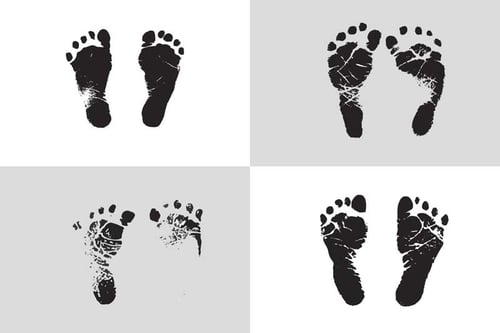
Claw toe is a common foot deformity. Though its cause has often been blamed on wearing shoes with high heels or those that are too short, the real cause tends to be something different.
In many cases, claw toe is caused by nerve damage that comes about because of alcoholism, diabetes and other diseases. These conditions can weaken the muscles in your foot with the result of your toes pushing down into your shoes.
As your toes push, or "claw," downward, painful calluses result. Like many conditions, if left untreated, claw toe gets worse. In fact, over time, without the proper treatment, the deformity can become permanent.
What are the Symptoms of Claw Toe?
Some common symptoms of claw toe include:
- toes that bend downward toward your shoe's sole at the middle joints. This is called flexion.
- toes that bend downward and curl under your foot because they are bent at the top joints
- toes that bend upward from the joints at the ball of your foot. This is known as extension.
- corns that develop on top of the toe or under the ball of your foot
When Should You See a Doctor About Claw Toe?
You should make an appointment with your doctor if you have any of the above symptoms of claw toe. You should do this even if you aren't having any discomfort or issues with your claw toe symptoms.
above symptoms of claw toe. You should do this even if you aren't having any discomfort or issues with your claw toe symptoms.
Typically, the sooner you seek the opinion of a medical professional, the better your toes will respond to treatment. During the evaluation, your doctor might order some specific tests that are designed to rule out neurological disorders. In some cases, these conditions can cause your foot muscles to weaken. The imbalances could cause your toes to bend. Claw toe can also be the results of inflammation and/or trauma.
What Treatment Options are Available if You Have Claw Toe?
In many cases, claw toe deformities are flexible when they first occur. However, without treatment, they can harden over time. Claw toe that is in the early stages might simply need tape or a split to keep the toes in position.
Other suggestions if you have claw toe that's still in the early stages include:
- avoid high heel footwear or tight shoes
- wear shoes that have soft and roomy toe boxes
- exercise your toes by crumpling a towel that is flat on the floor or picking up marbles
- stretch your toes and toe joint gently toward their correct positions with your hands
Claw toe that is in the later stages where your toes are fixed requires other treatments. These could include:
- special shoes that have an additional 3/8" in the toe box
- a specific pad designed to redistribute your weight so the pressure on the ball of your foot is relieved
- visiting a shoe repair shop and requesting that the stretch a small area in your shoe's toe box to accommodate your claw toe.
In cases where treatment doesn't provide relief, you might need surgery. However, only a doctor can correctly evaluate your claw toe and develop a treatment plan for you. Contact Sweeney Foot & Ankle Specialists to schedule an appointment today.






